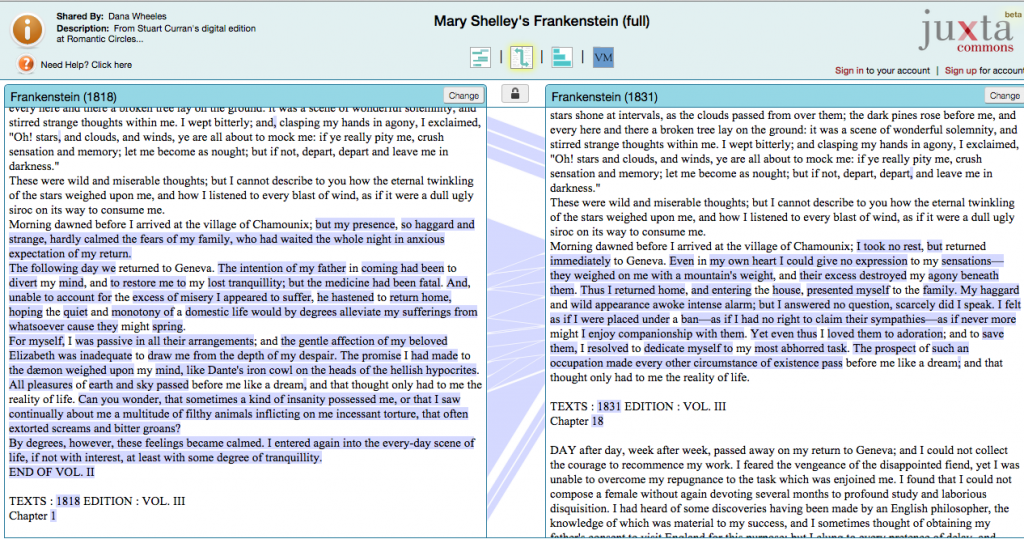Teaching Applications
I would like to include a section that directly connects my dissertation research to my teaching commitments. This could take many different forms. As I imagine it at present, this section would include:
An Annotated Syllabus
A syllabus plan that maps out the learning goals and course readings I would assign if I were leading an upper-level undergraduate seminar framed around the novels I highlight in this dissertation.
Two to three assignments or lesson plans for each chapter
These would include:
- learning objectives
- assignment language
- assessment information
Sample Activities
Two-Part Annotation Assignment
Inspired by Susan Bernstein’s Serial Readers blog as well as her approach to classroom discussion in her seriality seminar, this activity would ask students to reflect on their experience of reading The Woman in White in installments. I would demarcate the separate installments and invite students to use hypothes.is to annotate the text over the course of several weeks.
Part 1: This activity would emphasize the affective experience of reading the novel. For half of the installments, I would invite students to respond to characters and events as they read. Students would also be encouraged to engage in discussion with one another in the margins.
Using student comments as a starting-point, the class would then engage in conversation about textual elements that contribute to narrative suspense and readers’ emotional engagement with Victorian novels. (In this way, this assignment is in dialogue with Nicholas Dames, Rachel Ablow, and others’ work on the ways in which Victorian writers used formal means to shape affective experiences.)
Part 2: In subsequent weeks, students would engage with readings by H. J. Jackson and Ellen Gruber Garvey. Rather than detailing their emotional experience of the text, they would identify a form of grangerization, extra-illustration, or marginal notation detailed in Jackson or Garvey’s work. They would then use hypothes.is to experiment with these forms of reader participation.
Comparative Analysis Assignment
As a TA for Mario Ortiz-Robles’s English 242 course, I composed an essay prompt that invited students to use the Juxta analysis tool to identify a specific change in Mary Shelley made to the 1818 edition of Frankenstein when she released the 1831 edition. I asked students to make a case for how this particular alteration changed the meaning of this particular passage in the 1831 edition and why this was significant for their understanding of the 1818 narrative. This activity created the conditions for students to practice close reading in a very localized context. It also encouraged them to think about books as living objects that change over time.
I liked the conversations that this assignment helped foster during my discussion sections, and if I had a teaching position, I would include this kind of prompt in my class as a way to help anchor students’ close reading skills.
I would find it interesting to adapt this kind of comparative analysis assignment for a course that considered my dissertation’s central texts.


